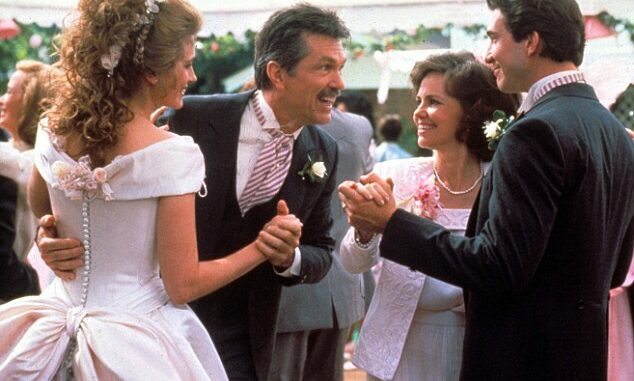
Steel Magnolias writer on the REAL story behind the Hollywood hit – and how nervous newcomer Julia Roberts ate burgers in his backyard. Robert Harling wrote Steel Magnolias – celebrating its 25th anniversary – after his beloved sister Susan died from diabetes complications
Susan left behind her two-year-old son Robert
Her tale was turned into a Hollywood blockbuster starring Julia Roberts as tragic ‘Shelby’
Robert says: ‘All I wanted was for Robert to know who his mom was’
He admits: ‘There will be people watching the movie now who don’t know it was based on a true story’. It is the image of a small, blonde-haired all-American boy beaming in the Easter sunshine that flashes up at the end of Hollywood classic Steel Magnolias – and stays with you long after the credits have rolled.

As writer Robert Harling explains, many new fans will not even know that the movie is rooted in truth and that boy is, in fact, based on his real-life nephew and namesake.
Softly spoken and with a Southern accent that still hints at his Louisiana upbringing, Robert Harling wrote the play Steel Magnolias shortly after the death of his beloved sister Susan Robinson aged just 33 in 1985.
Susan left behind her husband Dr Pat Robinson and their two-year-old son Robert after years of battling diabetes, and amid the waves of his grief, Robert, then an actor, put pen to paper at the urging of close friends and wrote all about the town of Natchitoches, where his mother Margaret ruled the roost and the women ‘spoke in bumper stickers’.Based on a true story: Robert Harling wrote Steel Magnolias following the death of his beloved sister Susan Robinson. An unknown Julia Roberts – pictured here with her on-screen son – played the character of Shelby, based on Susan. His off-Broadway play became a hit and was then turned into a Hollywood blockbuster in 1989 starring Sally Field, Dolly Parton, Shirley Maclaine, Daryl Hannah, Olympia Dukakis – and a young and unknown Julia Roberts, then just 19, who played Shelby, the character based on Susan.

With its 25th anniversary this year, memories of a teenage Julia eating hamburgers grilled by his dad at the family home, while Dolly Parton sang on his sofa, come flooding back as Robert, 62, speaks.
And it is clear that the bonds that have kept Susan tied closely to Robert all these years are still as tight as ever. Steel Magnolias has been his way, he says, of keeping Susan alive for her son, now 31, about to marry for a second time this summer and living in Texas.
’There will be people now who watch the film now who don’t know it was based on a true story’, muses Robert: ‘It’s really interesting and emotional and a nice journey to go back and revisit – 25 years is a long time.
‘The story is always with me, but it’s a time just to stop and remember Susan and us as kids, what the town meant to her, to touch base.’In an exclusive interview with MailOnline, Robert reveals: ‘Susan died in the fall of 1985. Pat, my ex-brother-in-law, he remarried five or six months after her death and the first time I heard my nephew call this other woman ‘mama’ was when I said ‘No – Susan can’t disappear’.
‘I guess I started writing the play about six months later, it came out very, very fast. I wrote the first version in 10 days, I was just trying desperately to get the language, and capture exactly how the women spoke.
‘I wanted to celebrate my sister, it was a time of tumult and the way it took off, who knew. I never, in a million years, thought it would even get produced when I was writing it.’
The play came out at ‘breakneck speed’ and had its first production in February 1987.
Robert admits he had no idea there was any comedy in the play until audiences started laughing.
His mother is duly immortalised as M’Lynn Eatenton – whose hair is said to closely resemble a teased brown football helmet – while his father’s character is called Drum.
But with a slight grimace, Robert reveals how at first he didn’t even plan to tell his parents that he had written a play about the darkest moment of their lives.

Just like in the movie, Margaret indeed tried valiantly to save her only daughter, donating a kidney to Susan in a desperate attempt to save her life.‘We were all tested,’ said Robert, ‘but my mother said ‘the buck stops here’, she was going to do it, she had to be there for Susan, that’s the way my mother was.
‘She just made it very clear that she was the one who was supposed to do this and she did.
‘But to do everything my parents did and for it still not work, there were some very dark times,’ he admits. Years later, his father would buy his mother a tear-shaped diamond necklace that she would never take off – and tell her ‘this is the last tear’.
At the urging of friend Kathy Weller, Robert told his mother about his play while she was visiting him in New York, and recalls: ‘She was stunned…She said ’what’s it about?’ I said ‘You!’
